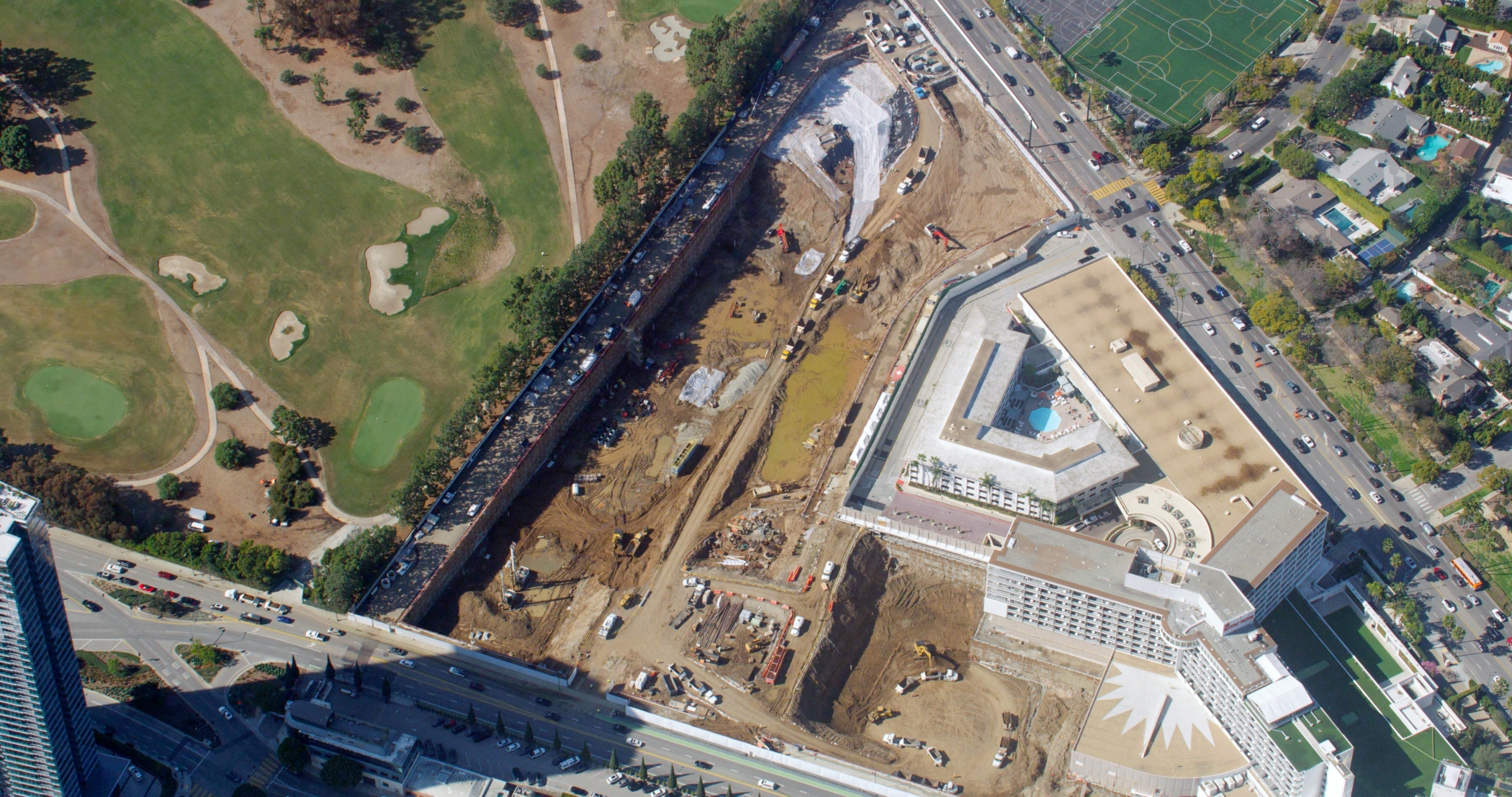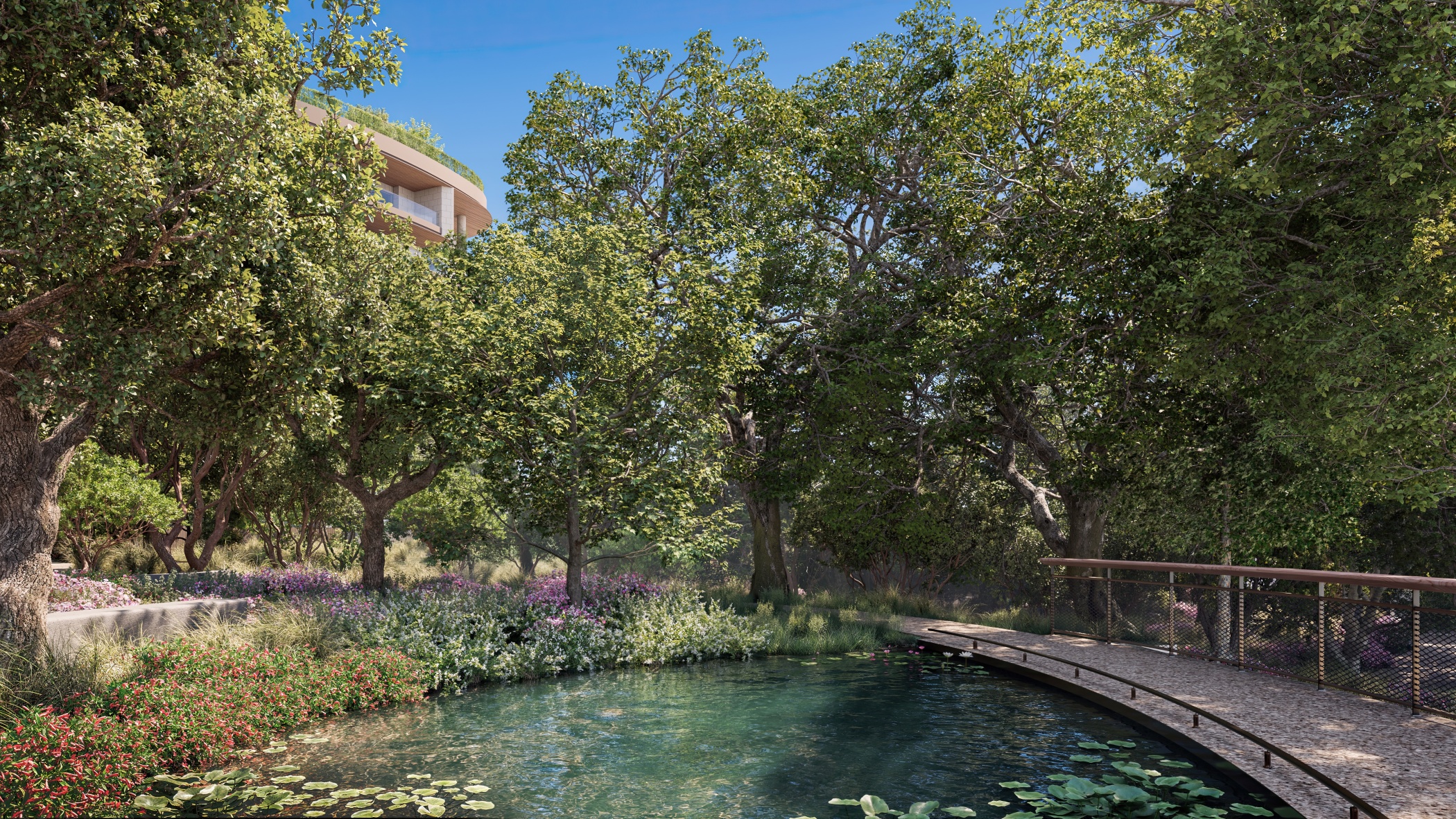Three high-profile dining and retail tenants are the first to commit to One Beverly Hills, a $10 billion luxury development that aims to rethink the way people shop in Los Angeles County by adding more green space than any such project in the city.
Italian fashion house Dolce & Gabbana, Italian marketplace and food hall Casa Tua Cucina and London-based restaurant Los Mochis will anchor the 200,000 square feet of retail and dining space, according to the project’s master developer, Cain.
The project aims to become a first-of-its-kind shopping and living hub in Beverly Hills with stores and condos built around 10 acres of botanical gardens and open space — a record size for such a development.
Visitors will meander through nature-lined walking paths, passing water features and drought-tolerant landscapes by design firm Rios, before reaching designer boutiques or chef-driven dining rooms.
The concept stands out from more traditional storefronts such as those found in nearby Rodeo Drive, the region’s premiere retail district where luxury brands cluster in polished storefronts.
“The balance between bold experiences and everyday social spaces is essential to how we’re curating the mix,” Brent Habeck, executive vice president of commercial leasing at One Beverly Hills, told CoStar News.
This strategy reflects a larger evolution in luxury retail real estate, where developers are leaning on experiential environments to attract both tenants and shoppers. One Beverly Hills aims to position itself as a retail and apartment project with a rare addition of new public space in Beverly Hills, Habeck said.

The project has 200,000 square feet of planned retail space, a 78-room luxury hotel, roughly 200 condominiums and a public park along with the gardens and green space.
It broke ground last year but still has to head through a development process that can be delayed by financing or permitting issues. Still, developers plan for the project to open in time for the 2028 Olympics.
Meanwhile, Beverly Hills has seen a pullback in consumer spending, with retail tenants giving back 32,000 square feet of space in the past year. That has pushed retail vacancy up to 8% from 7% a year ago, compared with the U.S. average of 4.3%, according to CoStar data.
Hospitable retail garden
Dolce & Gabbana’s new space will serve as an extension of its Rodeo Drive flagship, which spans 3,500 square feet at Two Rodeo Drive less than a mile away.
Casa Tua Cucina will introduce a 20,000-square-foot Italian marketplace, and Los Mochis will debut in the United States with a 12,000-square-foot indoor-outdoor restaurant featuring a private garden and a hidden omakase counter.
On the residential front, Cain is marketing nearly 200 condos priced from $20 million to over $40 million, with the first tower nearing $1 billion in sales.
The gardens, inspired by California’s biodiversity, will feature oak ridges, pollinator habitats and more than 200 species of drought-tolerant plants. Two miles of walkways will connect the restaurants and shops with nearby hotels and condo towers, including the Aman Beverly Hills, the Beverly Hilton and Waldorf Astoria.
Retail tenants are encouraged to design indoor-outdoor spaces that flow directly into the gardens, Habeck said.
Los Mochis, for example, plans its own 2,000-square-foot private garden along with a hidden Mexican-Japanese omakase counter, a sushi bar, a private dining room and a late-night agaveria.

Redesign of Beverly Hills retail
The tract of land near the city’s west side was once home to the Beverly Hills Nurseries and later the Robinson-Mays department store.
The gardens are designed to soften two of Beverly Hills’ busiest thoroughfares — Wilshire and Santa Monica boulevards — turning traffic corridors into a walkable civic gateway, according to Katherine Harvey, creative director at Rios.
“These gardens will join the iconic collection of public spaces that help define Beverly Hills and the region,” said a statement from Harvey.
Cain has invested more than $200 million in resiliency, including geothermal energy systems, stormwater management and fire-resistant materials.
Parking and access are central to the plan. One Beverly Hills will rely on a combination of new underground parking, valet service and existing capacity at the Hilton to accommodate hotel guests, residents and retail visitors.
The idea is to keep cars out of sight so that the elevated gardens and pedestrian walkways remain the dominant experience at ground level.
One Beverly Hills offers high-profile retail space for brands that can’t get a storefront on nearby Rodeo Drive, where occupancy is tight. Luxury conglomerate LVMH controls most of the space and has filed plans for a sprawling flagship retail building with several restaurants, a brand museum and a large rooftop garden on Rodeo Drive in Beverly.
Average annual retail rent on Rodeo Drive climbed 19% year over year to $1,100 per square foot in 2024, the second-highest rental rate in the United States, behind New York’s Fifth Avenue, according to Cushman & Wakefield’s annual tally of the world’s most expensive shopping streets. That’s more than the global average rental rate growth of 4% and the Americas’ average of 11% during the period.


